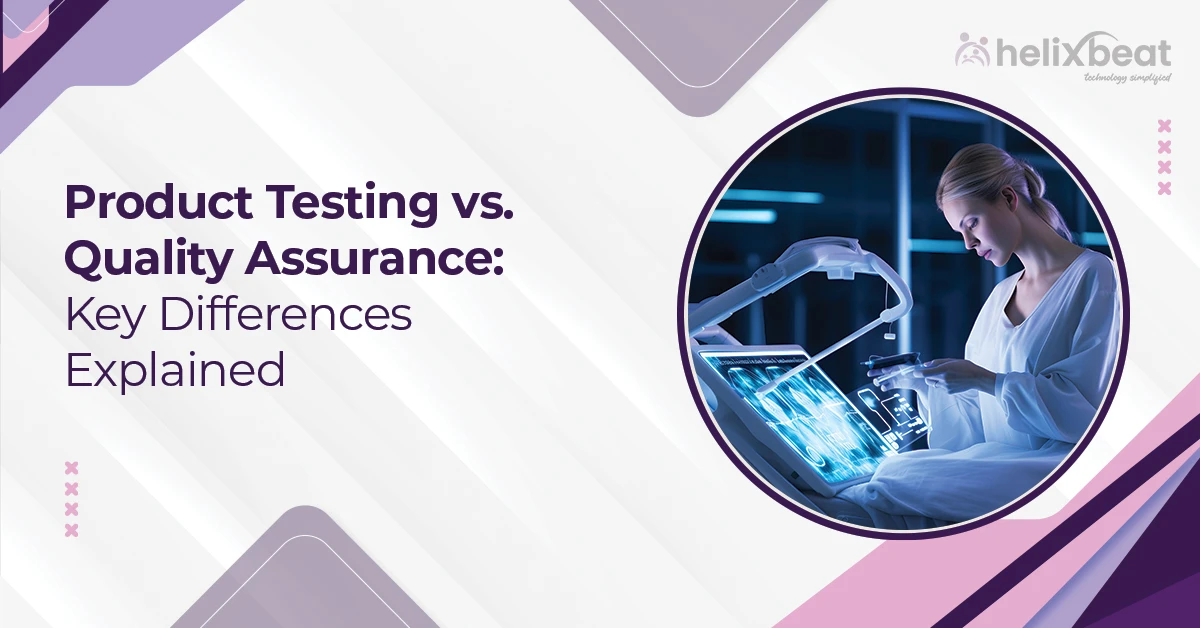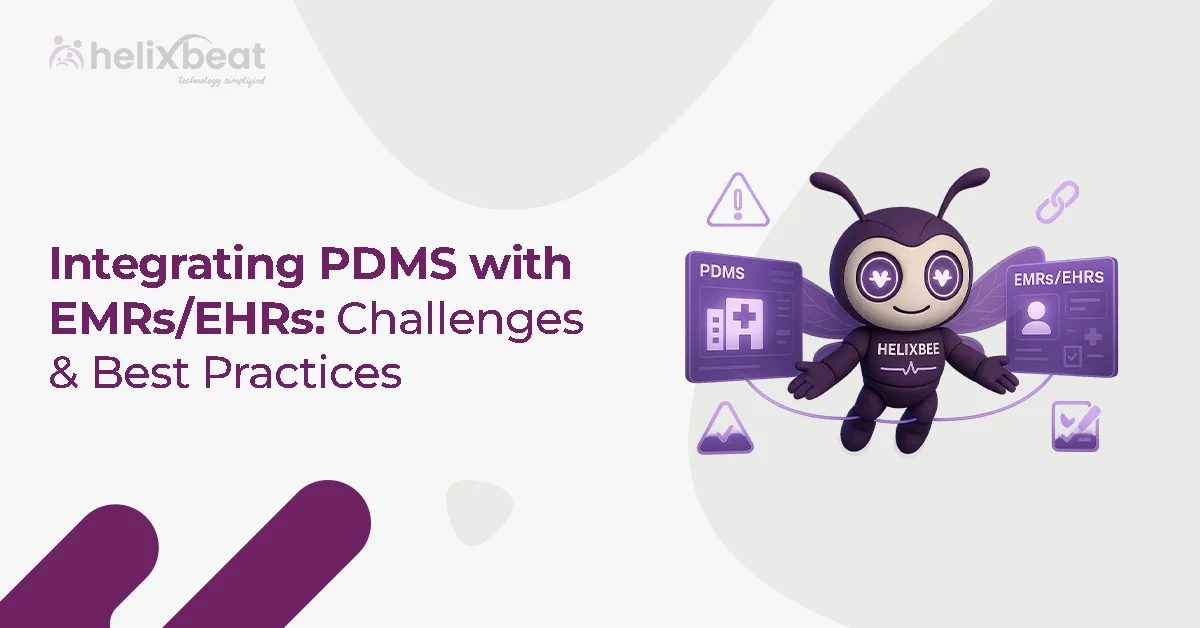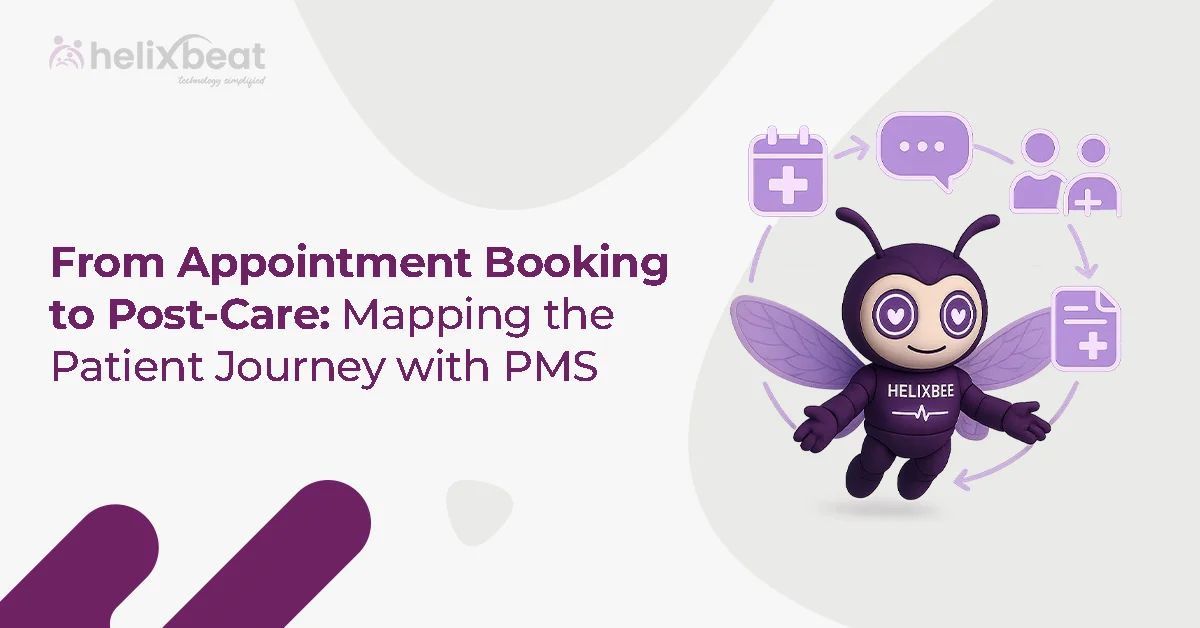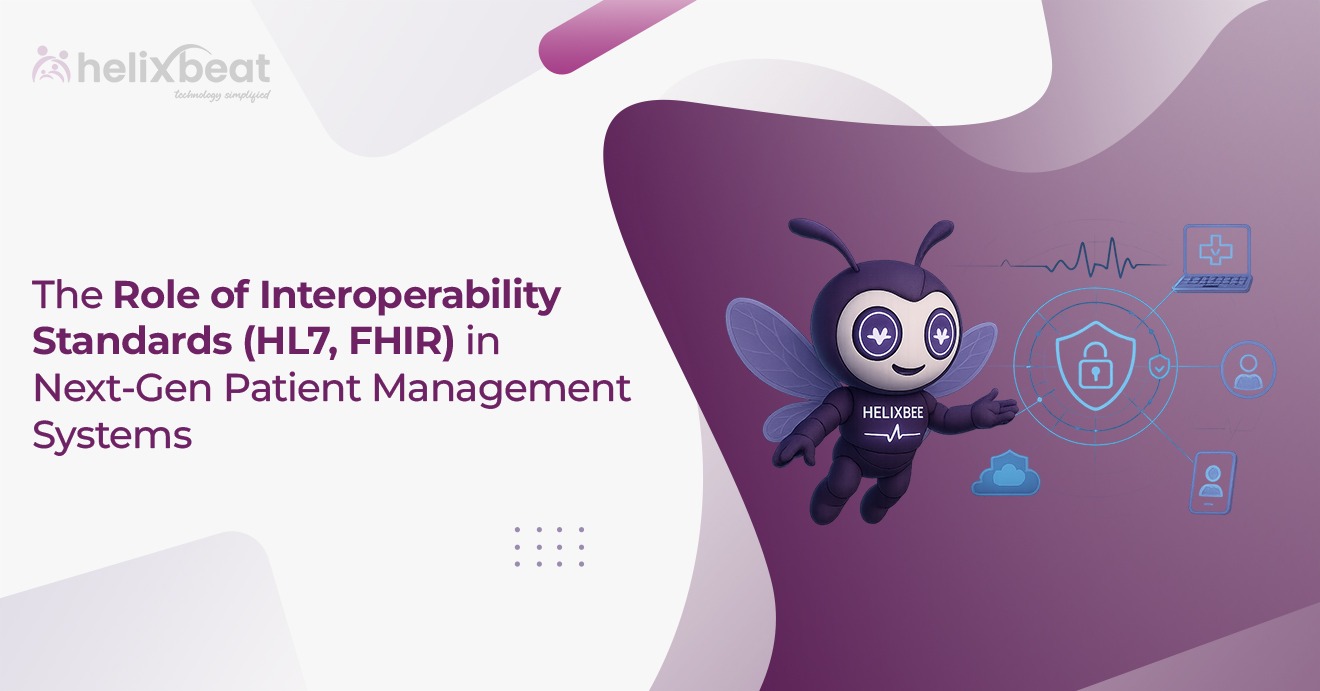How often do you hear the terms “product testing” and “quality assurance” used interchangeably? While they may seem similar, these two processes are distinct yet interconnected components of product development. Testing vs QA processes serve unique purposes but work together to ensure a product is not only functional but also reliable, efficient, and aligned with user expectations.
For entrepreneurs, IT decision-makers, and business leaders, understanding the differences between these two concepts is essential for crafting an effective product development strategy. In this blog, we will delve into the nuances of product testing and quality assurance, explore their individual importance, and provide guidance on how to determine which approach—or combination of both—is best suited to your needs.
Table of Contents
Is Quality Assurance and Product Testing the Same?
While quality assurance (QA) and product testing are both crucial to product development, they serve different purposes. Understanding their unique roles and how they complement each other is essential for creating better products.
Quality assurance is a proactive process focused on preventing issues during development. It involves improving workflows, setting clear guidelines, and creating standards to maintain consistency. By addressing risks early, QA helps streamline the development process and reduces the likelihood of major issues later.
For example, a logistics company implemented QA practices, such as defining coding standards during software development. This approach reduced bugs and improved development efficiency. Building on this principle, Helixbeat integrates QA processes into product development, helping businesses optimize workflows and minimize errors.
On the other hand, Product testing is a reactive process conducted after the product is built. It evaluates the product’s functionality, ensuring it meets user needs and works as intended. Moreover, Testing focuses on identifying and fixing issues before the product is released.
For instance, an e-commerce platform tested its website to handle high traffic during Black Friday sales. These tests prevented potential crashes and enhanced user experience. Similarly, Helixbeat employs diverse product testing methods, such as performance and usability checks, to help businesses deliver reliable and user-friendly products.
Key Differences Between Product Testing and Quality Assurance
To create high-quality products, understanding the differences between quality assurance (QA) and product testing is essential. QA focuses on preventing issues during development, while product testing identifies and resolves them afterward. Together, these processes ensure a smooth development workflow and a reliable final product.
Proactive vs. Reactive
QA takes a proactive approach by focusing on improving the development process itself. It aims to prevent issues before they arise, making the overall workflow more efficient. In contrast, product testing is reactive. It comes into play after the product is developed to identify and fix any defects or issues before the product reaches the market. Both approaches are essential, but their timing and purpose set them apart.
Process vs. Product Focus
QA is process-driven, focusing on how the product is built. It involves setting guidelines, creating standards, and improving workflows to prevent errors during development. On the other hand, product testing is all about the final product. It examines whether the product functions as expected and meets the needs of the user. This difference shows how QA addresses the “how,” while testing focuses on the “what.”
Timing in the Development Cycle
QA spans the entire development cycle, starting from the planning stage and continuing even after the product is launched. It ensures that processes remain consistent and effective throughout. Product testing, however, usually takes place near the end of development, just before the product is released. By working at different stages, QA and testing complement each other to deliver a reliable and user-friendly product.
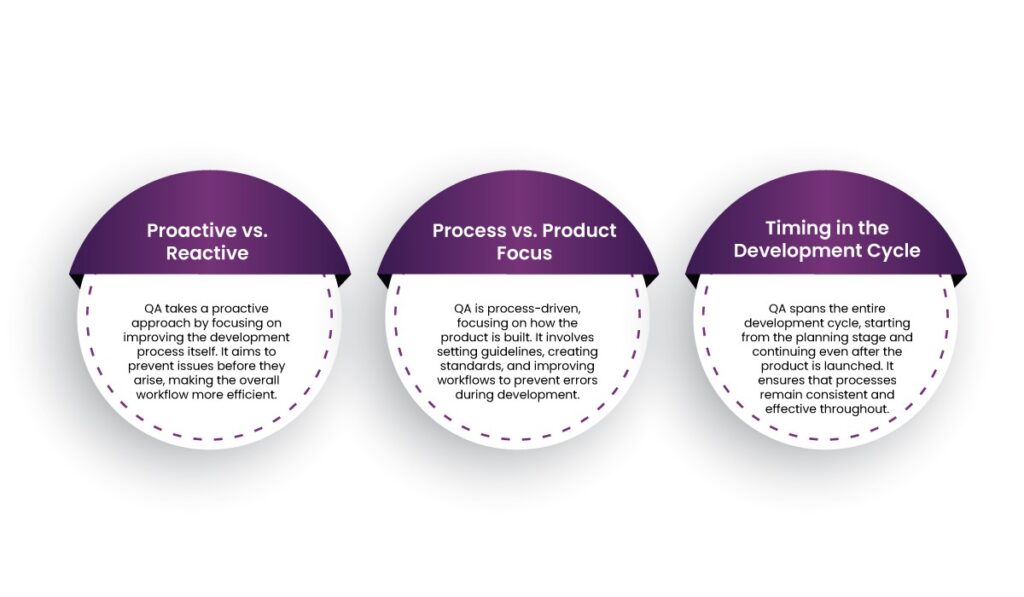
Why Are Both QA and Product Testing Essential?
Both quality assurance (QA) and product testing play unique roles in product development. Together, they create a comprehensive approach to minimizing risks and delivering reliable results.
Comprehensive Risk Management
Relying on only one method can leave gaps in the development process. QA works early in the cycle, focusing on improving workflow and preventing issues before they arise. On the other hand, product testing comes in later to identify and address any remaining defects in the final product. This combined approach ensures that risks are reduced at every stage of development, leading to better outcomes.
For example, a healthcare app developer successfully combined QA and product testing to address critical risks. By applying QA practices, they ensured compliance with HIPAA regulations early in development, while product testing uncovered usability issues that were resolved before launch. This dual approach resulted in a secure and user-friendly app.
Similarly, Helixbeat adopts an end-to-end strategy by integrating QA processes with product testing methods like performance and usability tests. This ensures that potential risks are addressed early, while final-stage testing resolves any remaining issues, helping businesses deliver products that are both reliable and aligned with industry standards.
Product Testing vs. Quality Assurance- Which One to Opt For?
Deciding between product testing and quality assurance (QA) depends on the specific goals and needs of your project. Both play different roles in product development and understanding when to prioritize each can make a big difference in the outcome.
When to Prioritize QA
QA focuses on improving processes throughout the development cycle. It is ideal for complex, long-term projects where maintaining consistency and preventing errors is crucial. QA is also a good choice when projects involve high regulatory compliance requirements, such as in healthcare or finance. By identifying risks early and creating a solid foundation, QA helps reduce potential issues before they arise.
For instance, if you are developing a medical app that must meet strict data security standards, QA would help set up guidelines and workflows to minimize risks from the start.
When to Prioritize Product Testing
Product testing is best suited for short-term or smaller projects that require quick validation of functionality. It focuses on finding and fixing defects in the final product, making it a great choice for tight deadlines. Testing is particularly useful when you need to confirm that the product works as expected and provides a good user experience.
For example, if you are launching an e-commerce website with limited features, product testing can help identify performance issues and fix them before going live.
How Helixbeat Can Help
Helixbeat offers expertise in both QA and product testing, tailoring its approach to fit your project’s needs. Whether your focus is on improving processes or validating the final product, Helixbeat helps businesses across industries create reliable, high-quality products that align with their goals. By combining these practices, Helixbeat ensures that your development strategy covers every stage of the process effectively.
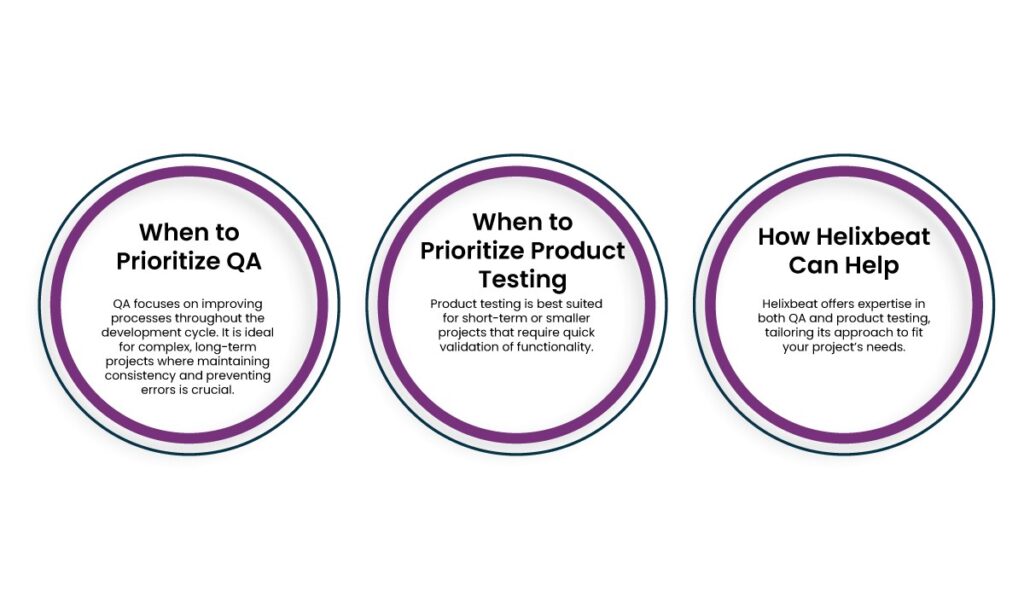
To wrap it up
Quality assurance and product testing are two sides of the same coin, both playing a vital role in creating successful products. QA focuses on preventing defects during development, while testing ensures the final product meets user expectations and performs as intended. Together, they form a comprehensive approach to building reliable and high-quality solutions.
By understanding Testing vs QA processes, businesses can effectively minimize risks, enhance user satisfaction, and maintain a competitive edge. Helixbeat bridges the gap between QA and testing by seamlessly integrating both into the development lifecycle, ensuring your product is not only functional today but also adaptable to future demands.
Ready to elevate your development process with a balanced approach to QA and testing? Contact Helixbeat today for tailored product development solutions that deliver exceptional results!
FAQs
- What is the main difference between QA and product testing?
QA is process-driven and proactive, while product testing is product-focused and reactive.
- Why are QA and product testing important?
Both ensure that the product meets user expectations and minimizes risks during and after development.
- What are the types of product testing?
Functional, performance, usability, compatibility, and security testing are common types.
- Can QA replace product testing?
No, QA and product testing complement each other and address different aspects of product development.
- When should QA be prioritized over testing?
QA is ideal for long-term projects requiring process optimization and regulatory compliance.
- How does Helixbeat handle QA and testing?
Helixbeat integrates QA and product testing into its development framework to deliver reliable, market-ready products.
- Is QA more expensive than product testing?
QA may have higher upfront costs but reduces long-term expenses by preventing defects.



